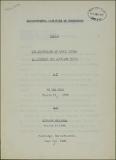| dc.contributor.advisor | A. L. Townsend. | en_US |
| dc.contributor.author | Moy-Ding, William | en_US |
| dc.contributor.author | Chun, Ki Kee | en_US |
| dc.contributor.other | Massachusetts Institute of Technology. Department of Business and Engineering Administration. | en_US |
| dc.coverage.spatial | a-cc--- a-ii--- | en_US |
| dc.date.accessioned | 2017-01-12T18:31:58Z | |
| dc.date.available | 2017-01-12T18:31:58Z | |
| dc.date.issued | 1920 | en_US |
| dc.identifier.uri | http://hdl.handle.net/1721.1/106403 | |
| dc.description | Thesis: B.S., Massachusetts Institute of Technology, Dept. of Mechanical Engineering, 1920. [first author]. | en_US |
| dc.description | Thesis: B.S., Massachusetts Institute of Technology, Dept. of Business and Engineering Administration, 1920. [second author]. | en_US |
| dc.description | Includes bibliographical references (leaf 41). | en_US |
| dc.description.abstract | Introduction: The coming commercialization of aircraft has led to the investigation of many constructive textile fabrics - Silk, linen, and cotton fabrics are used most commonly. On account of the high cost, the use of silk and linen is limited to a great extent. today mercerized cotton fabric plays the predominating part in the construction of airplane wings. The object of this experiment is to investigate the physical properties of ramie for its possible entering into the realm of its sister fabrics. Ramie is a fiber obtained from the base of the stingless nettle or Baehmerica tenncissima, which grows best in tropical and sub-tropical countries. The plant is a shrub, reaching four to six feet in height, and is very hardy. It is largely cultivated in China and India. In China it is cultivated in Hupeh, Szechuen Kiangsi, and Kwangtung. In Kwangtung, the local product is made into glass cloth. (Appendix IV) The piece of ramie fabric used in this research was imported from China. The fiber is white in color, but not very elastical and flexible. It can be separated as fine as silk. Its surface is smooth and regular. On this account it lacks cohesion and does not adhere to each other. | en_US |
| dc.description.statementofresponsibility | by William Moy-Ding and Ki Kee Chun. | en_US |
| dc.format.extent | 58 leaves | en_US |
| dc.language.iso | eng | en_US |
| dc.publisher | Massachusetts Institute of Technology | en_US |
| dc.rights | M.I.T. theses are protected by copyright. They may be viewed from this source for any purpose, but reproduction or distribution in any format is prohibited without written permission. See provided URL for inquiries about permission. | en_US |
| dc.rights.uri | http://dspace.mit.edu/handle/1721.1/7582 | en_US |
| dc.subject | Mechanical Engineering. | en_US |
| dc.subject | Business and Engineering Administration. | en_US |
| dc.title | The properties of ramie fabric as covering for airplane wings | en_US |
| dc.type | Thesis | en_US |
| dc.description.degree | B.S. | en_US |
| dc.contributor.department | Massachusetts Institute of Technology. Department of Business and Engineering Administration | en_US |
| dc.contributor.department | Massachusetts Institute of Technology. Department of Mechanical Engineering | |
| dc.identifier.oclc | 37908444 | en_US |
